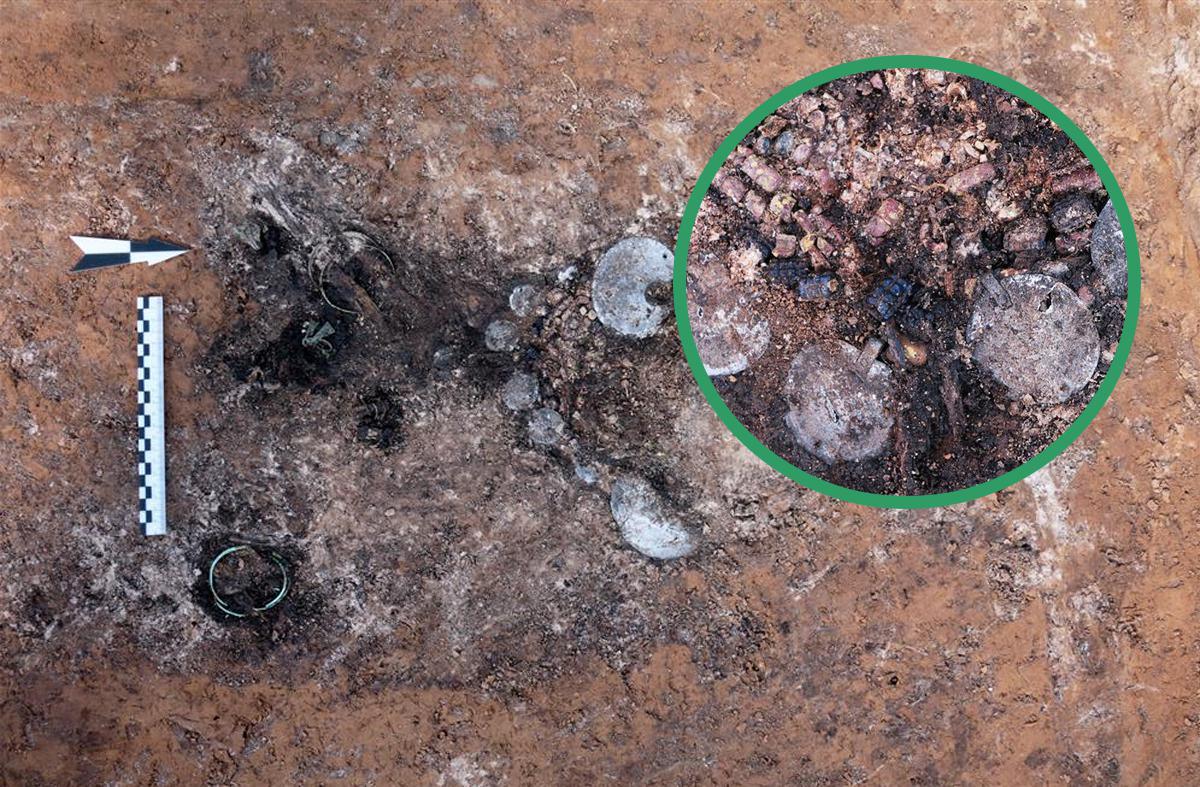Archaeologists from the Institute of Archaeology of the Russian Academy of Sciences have been excavating a burial ground associated with the Finnic Muromians.
The Finnic Muromians were groups of settlers that lived within the vicinity of the Volga and Oka rivers. They spoke Muromian, an Uralic language that became extinct following their assimilation by the Slavs.
The burial ground, which dates from the early 10th century AD, was discovered on the eastern bank of the Oka river, located in the Nizhny Novgorod Region of Russia.
A total of seventeen burial pits have been identified, nine of which have been severely damaged through looting.
The surviving 8 burials contain the remains of four children, two women, and two men.
The men were accompanied with an ornate collection of grave goods, including arrowheads, knives, bronze bracelets, iron plates, a bronze buckle, and a whetstone.
At the bottom of one of the pits is a heavily corroded axe, along with a flint that has traces of iron-coated embossed leather and textile threads.
The burials containing women were also accompanied with high status funerary goods, such as a necklace of red-brown prismatic and dark blue berry-shaped beads of Byzantine origin, signet ring-shaped pendants, plate bracelets, a bronze spiral, and a silver ring.
Traces of wood within the pit fillings suggest that they originally contained a wooden structure, similar to a log house made of thin beams and covered with birch bark.
According to the Institute of Archaeology of the Russian Academy of Sciences: “The culmination of the discoveries at the site were two clay vessels, testifying to direct and close contacts between the right-bank Muromians and the Old Russian population.”
Header Image Credit : Institute of Archaeology of the Russian Academy of Sciences
Sources : Institute of Archaeology of the Russian Academy of Sciences


